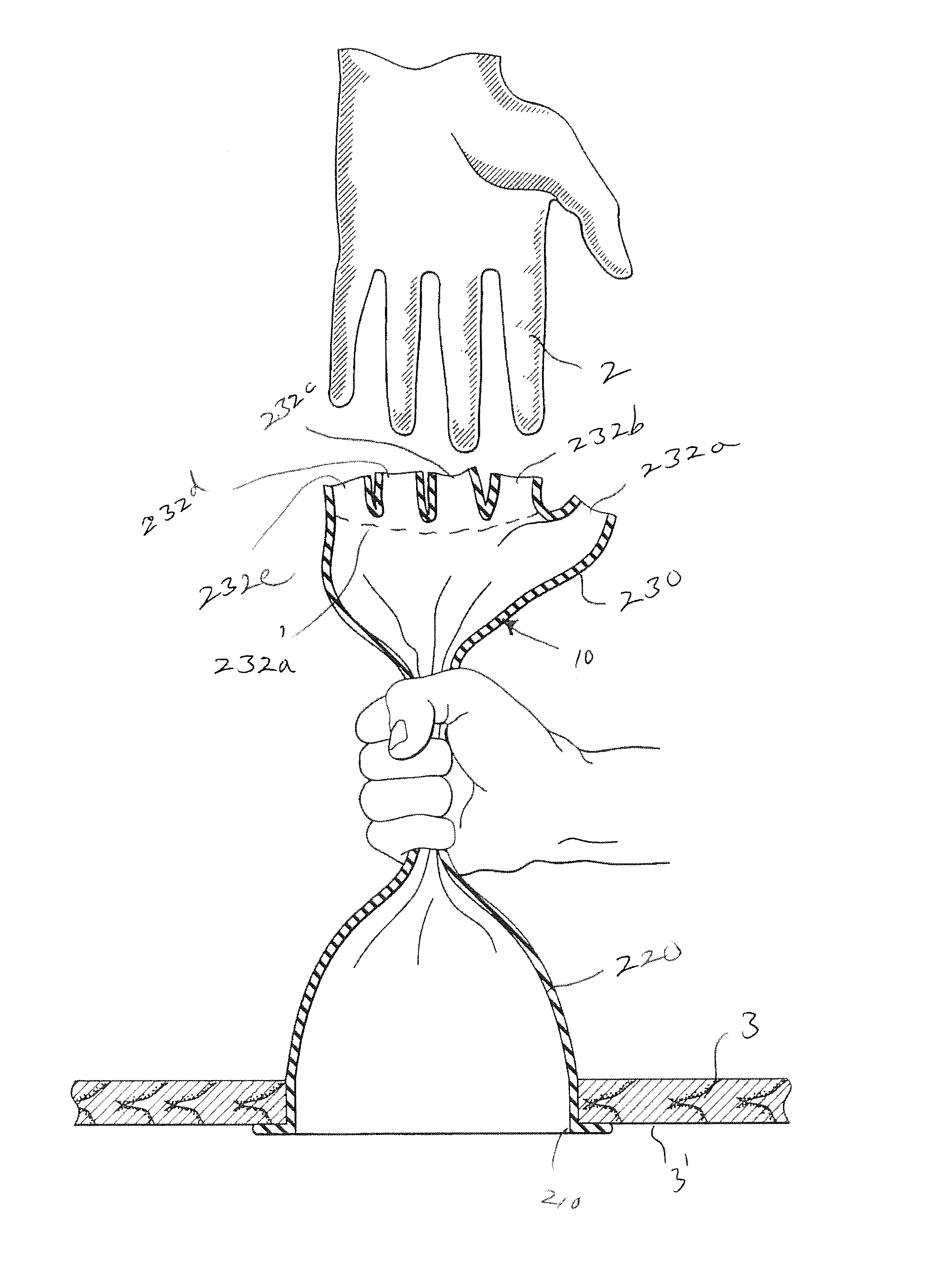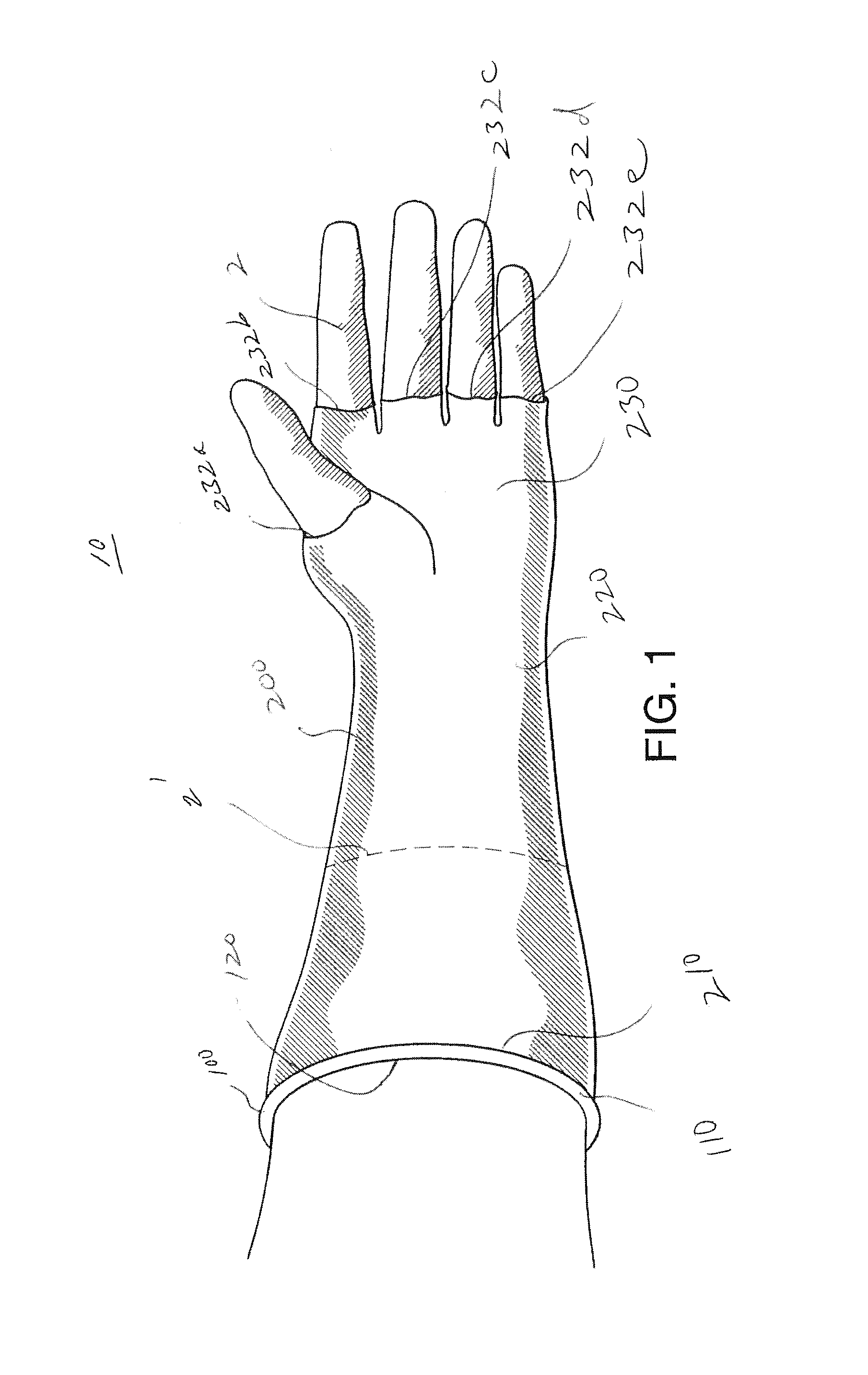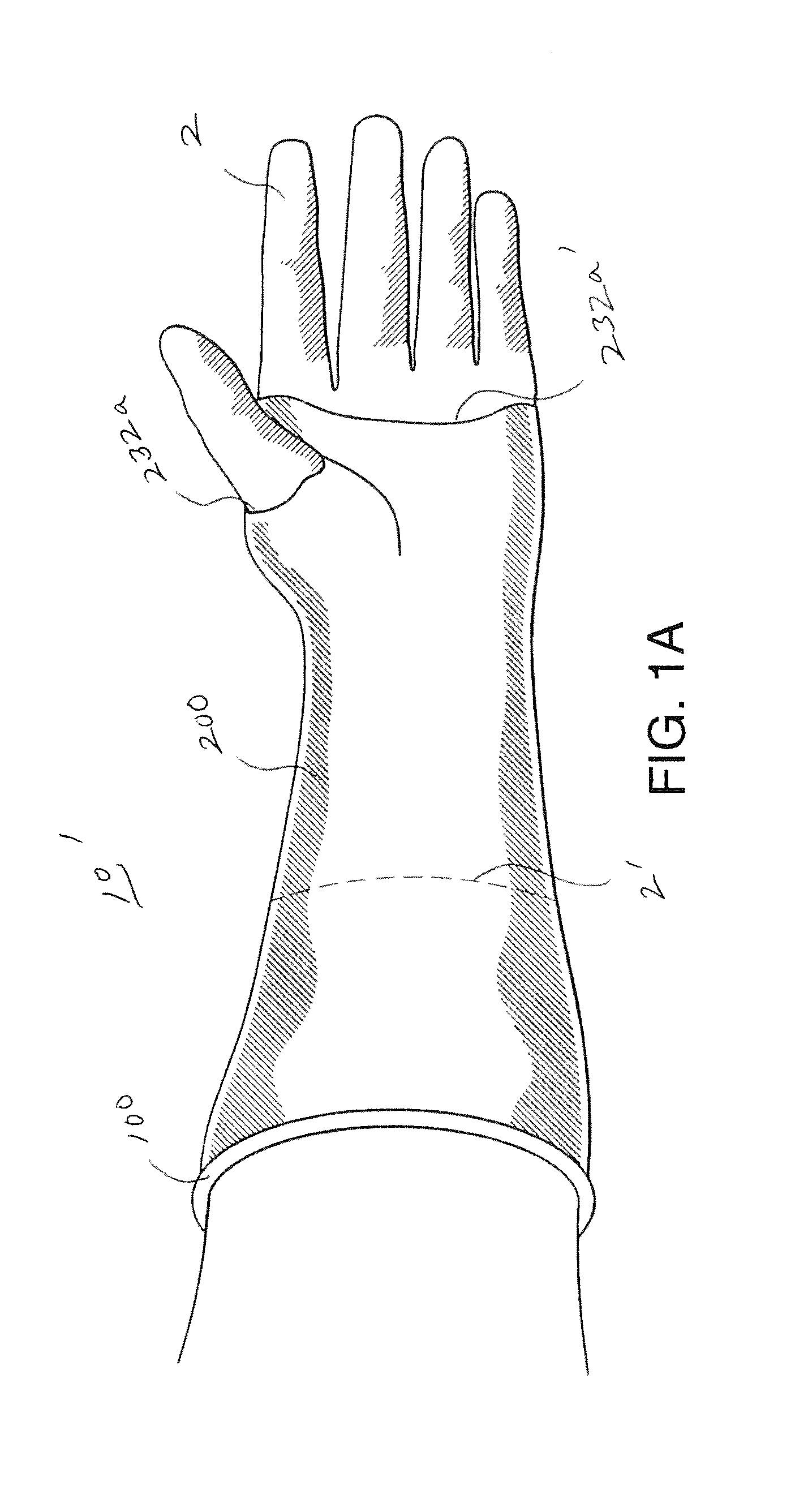Apparatus and method for selectively arrestable manuary access to sufflated body cavity
a manuary and sufflating technology, applied in the field of facilitating a minimally invasive surgical procedure, can solve the problems of reducing the utility of the apparatus, affecting the safety of patients, so as to achieve safe and secure access to the manuary
- Summary
- Abstract
- Description
- Claims
- Application Information
AI Technical Summary
Benefits of technology
Problems solved by technology
Method used
Image
Examples
Embodiment Construction
[0042]In broad overview, the apparatus and method of the present invention improves upon known approaches to establishing manuary access to a patient's internal body cavity. The subject apparatus is configured for use by a surgeon or other health care professional having his / her accessing hand already wearing a surgical glove. The subject apparatus provides an outer glove portion formed with much the same structure as in the glove of the inventor's own prior U.S. Pat. No. 6,471,714. But the fingers and thumb portions of the outer glove portion are truncated, with their tips effectively cut away. Truncating these digit sections of the outer glove portion at or near their base enables a surgeon or other health practitioner to put a surgical glove over their hand, and insert the gloved hand into the outer glove portion preferably with his / her gloved thumb passing through one truncated digit opening and gloved fingers passing collectively through another shared truncated digit opening. ...
PUM
 Login to View More
Login to View More Abstract
Description
Claims
Application Information
 Login to View More
Login to View More - R&D
- Intellectual Property
- Life Sciences
- Materials
- Tech Scout
- Unparalleled Data Quality
- Higher Quality Content
- 60% Fewer Hallucinations
Browse by: Latest US Patents, China's latest patents, Technical Efficacy Thesaurus, Application Domain, Technology Topic, Popular Technical Reports.
© 2025 PatSnap. All rights reserved.Legal|Privacy policy|Modern Slavery Act Transparency Statement|Sitemap|About US| Contact US: help@patsnap.com



